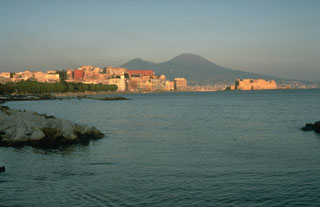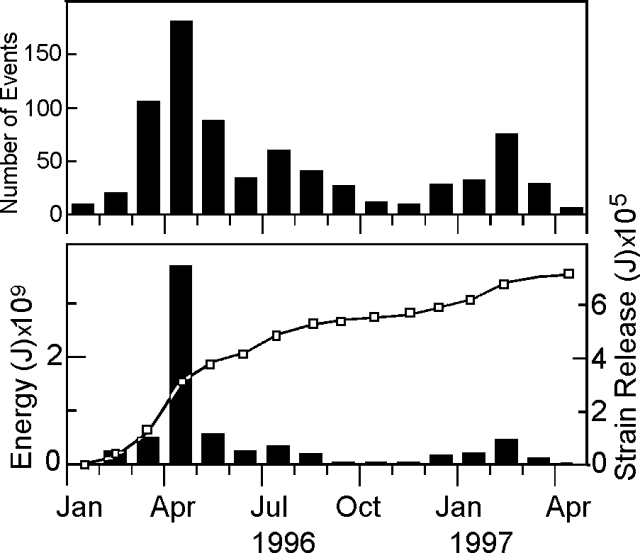Report on Vesuvius (Italy) — April 1997
Bulletin of the Global Volcanism Network, vol. 22, no. 4 (April 1997)
Managing Editor: Richard Wunderman.
Vesuvius (Italy) Low seismicity prevails after March-May 1996 earthquake swarm
Please cite this report as:
Global Volcanism Program, 1997. Report on Vesuvius (Italy) (Wunderman, R., ed.). Bulletin of the Global Volcanism Network, 22:4. Smithsonian Institution. https://doi.org/10.5479/si.GVP.BGVN199704-211020
Vesuvius
Italy
40.821°N, 14.426°E; summit elev. 1281 m
All times are local (unless otherwise noted)
During late 1996 through early 1997 Somma-Vesuvius remained volcanically quiet and characterized by low seismicity both in terms of energy and number of events.
A few episodes of moderate seismic activity have occurred in the last twenty years. The crisis of March-May 1996, characterized by an M 3.4 event (BGVN 21:08) was followed by a significant decrease of the seismic activity (figure 3). After the crisis, during June 1996-April 1997, 350 microearthquakes (maximum magnitude, 2.7) were recorded at the permanent seismic network of the Osservatorio Vesuviano. As has been typical in the past, foci appeared in a small volume below the crater area, rarely at depths below 6 km.
During January 1996-April 1997 the monthly temporal distribution of both earthquakes and their energy fluctuated, as had been the case in the past. The distribution of the cumulative strain release (figure 3) had its regular trend, disturbed only by the seismic crisis of March-May 1996. Both ground deformation and fumarolic gas composition data remained stable.
Geological Summary. One of the world's most noted volcanoes, Vesuvius (Vesuvio) forms a dramatic backdrop to the Bay of Naples. The active cone was constructed within a large caldera of the older Monte Somma edifice, thought to have formed incrementally beginning about 17,000 years ago. The Monte Somma caldera wall has channeled lava flows and pyroclastic flows primarily to the south and west. Eight major explosive eruptions have taken place in the last 17,000 years, often accompanied by large pyroclastic flows and surges, such as during the 79 CE Pompeii eruption. Intermittent eruptions since 79 CE were followed by a period of frequent long-term explosive and effusive eruptions between 1631 and 1944. The large 1631 eruption produced pyroclastic flows that reached as far as the coast and caused great destruction. Many towns are located on the flanks, and several million people live within areas that could be affected by eruptions.
Information Contacts: Lucia Civetta, Francesca Bianco, Giuseppe Vilardo, and Mario Castellano, Osservatorio Vesuviano, Via Manzoni 249, 80123 Napoli, Italy.


